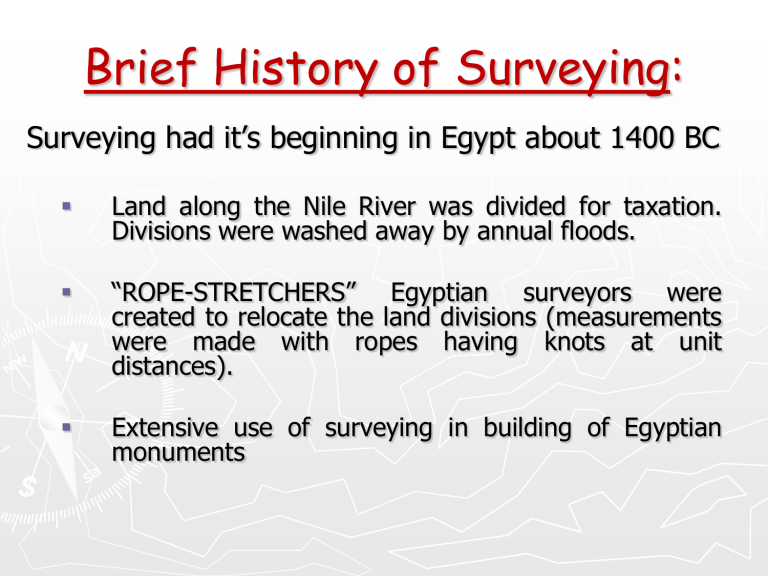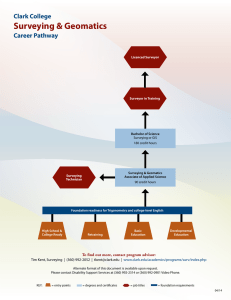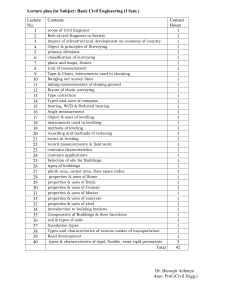Brief History of Surveying: From Egypt to Modern Times
advertisement

Brief History of Surveying: Surveying had it’s beginning in Egypt about 1400 BC Land along the Nile River was divided for taxation. Divisions were washed away by annual floods. “ROPE-STRETCHERS” Egyptian surveyors were created to relocate the land divisions (measurements were made with ropes having knots at unit distances). Extensive use of surveying in building of Egyptian monuments Brief History of Surveying: Greeks: expanded Egyptian work and developed Geometry. Developed one of the earliest surveying instruments – Diopter (a form of level). Brief History of Surveying: Romans: developed surveying into a science to create the Roman roads, aqueducts, and land division systems. Surveyors held great power, had schools and a professional organization Developed several instruments: • Groma – cross instrument used to determine lines and right angles Brief History of Surveying: • Libella – “A” frame with a plumb bob used for leveling Brief History of Surveying: • Chorobates – 20’ straight edge with oil in notch for leveling Brief History of Surveying: Middle Ages: Land division of Romans continued in Europe. Quadrans – square brass frame capable of turning angles up to 90° and has a graduated scale developed by an Italian named Von Piso. Brief History of Surveying: 18th & 19th Century in the New World: the need for mapping and marking land claims caused extensive surveying, especially by the English. 1785: United Stated began extensive surveys of public lands into one mile square sections • 30 states surveyed under the U.S. Public Land System (also called the Rectangular System) 1807: United States Geological Survey founded to establish an accurate control network and mapping Famous American Surveyors: George Washington, Thomas Jefferson, George Rogers Clark, Abe Lincoln and many more. Brief History of Surveying: 20th Century and Beyond: As technology advanced, population increased, and land value caused development of licensure for surveyors in all states. Educational requirements for licensure began in the early 1990’s Capable of electronic distance measurement, positioning using global positioning systems, construction machine control, and lidar (scanning) mapping Involvement in rebuilding of the infrastructure and geographic information systems (GIS) Shortage of licensed professionals is projected well into the 21st century



